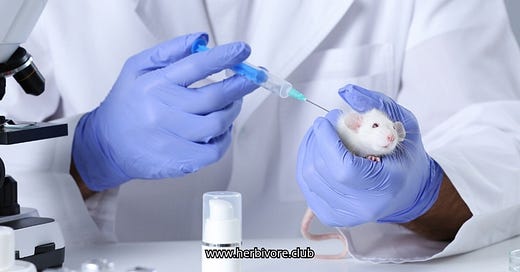If you still think animal testing dominates biomedical research, you’ve missed the memo. The shift has already happened — quietly, steadily, and overwhelmingly. And it didn’t take a moral awakening. It took better methods.
Across seven major research areas and five global regions, new analysis has confirmed what many researchers, regulators, and industry insiders already suspected: non-animal methods (NAMs) are winning. Not in theory. Not in five years. Right now.
For the last 20 years, animal-free studies have outpaced animal-based ones. And the gap is widening fast. By 2022, for every one paper using animals (alone or alongside NAMs), there were nearly three using NAMs alone.
Some areas — like breast cancer, lung disease, and toxicology — have embraced the shift more fully than others. But even in fields like heart disease and diabetes, where animal models were once seen as indispensable, reliance on live animals has plummeted.
The exception is neurodegenerative disease. It clings to animal research longer than the rest — possibly because the human brain isn’t easily simulated. Or maybe just because entrenched researchers don’t like change.
The UK leads, China lags
Of the five countries analysed — the US, UK, China, France, and Germany — the UK has the highest NAMs-to-animal ratio. In fact, the UK published more than four times as many NAMs-only studies as animal-based ones in 2022. China, on the other hand, has made the slowest progress. It dominates in sheer output but continues to rely heavily on animal-based methods.
This isn’t about culture or capacity. It’s about regulation. European laws like the cosmetics animal testing ban and REACH pushed researchers to ditch animals and innovate. The UK followed suit. The US and China didn’t. The result? Europe pulls ahead. Others trail behind.
It turns out that legal pressure works better than moral appeals. Around 2016–2018, following stricter EU requirements and deadlines, the use of NAMs spiked. Toxicology saw the steepest rise — a direct result of animal bans in chemical testing.
These shifts didn’t come from people suddenly caring. They came from people suddenly not having a choice.
And that’s the point. Science moves fastest when the right incentives — or restrictions — are in place.
While NAMs aren’t new, the technology driving them has evolved rapidly. Advanced models like organoids, lab-on-a-chip systems, and in silico simulations are no longer niche. Tissue-based and computer-based models now dominate the literature.
Lab-on-a-chip devices — once seen as sci-fi — are steadily increasing in use, particularly in blood cancer and breast cancer research. They’re still less common than other NAMs, but the growth is real. And for blood cancer, stem cell models have become a core method.
So why are animals still used at all?
Inertia. Publishing bias. Outdated curricula. And in some cases, risk aversion dressed up as scientific rigour. A recent survey found that researchers are often forced to validate NAMs with animal tests just to get published — even when the science doesn’t require it.
We’re not talking about overlapping studies here. If NAMs-only research needed animal confirmation, we’d see a delayed rise in animal-only publications. We don’t. The flatline tells its own story: researchers using animals are often the same ones who always have. The rest have moved on.
What this means for the animal justice movement
Animal-free research isn’t a utopian dream. It’s happening. Right now. In most major fields. Across much of the world.
But progress isn’t inevitable. It’s political. It’s structural. It’s uneven.
Where regulations drive innovation, animals are spared. Where they don’t, animals are used. Not because they’re better, but because they’re permitted.
So while awareness-raising matters, campaigning for systemic change matters more. The industry is evolving — not fast enough, not equally — but it is evolving. The job now is to accelerate that shift and expose the stagnation that props up animal research in places it’s no longer needed.
Every NAMs-only study is proof that animals were not required. Every regulatory delay that prolongs animal use is a decision — not a necessity.
We don’t need to wait for a tipping point. It already happened. Now we need to act like it.



